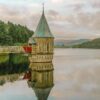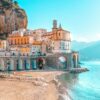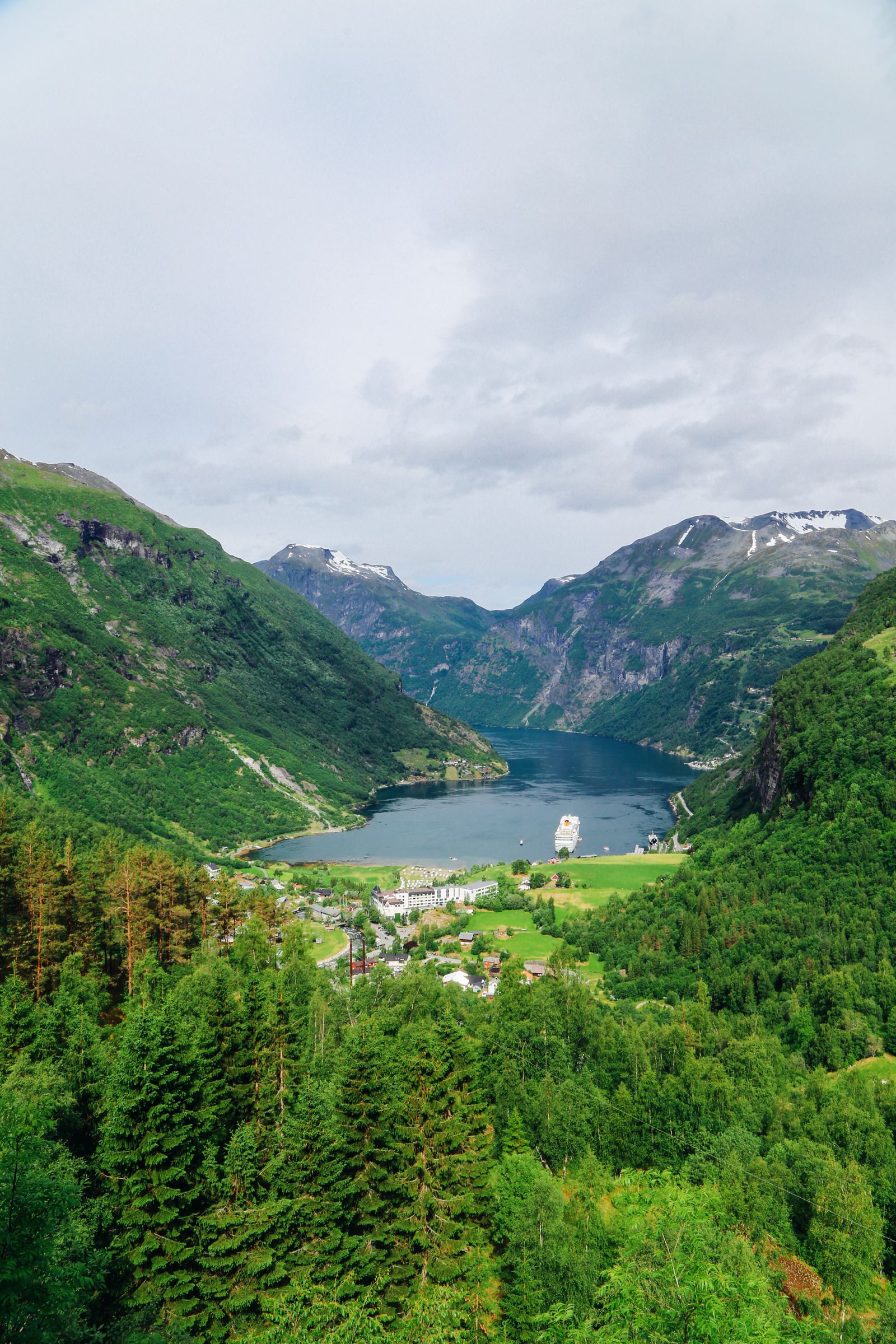Leaving the Dead Sea, our next stop in Israel was heading for another somewhat extreme environment – the Negev Desert.
The scenery as you leave the Dead Sea is pretty amazing, by the way…



More specifically actually our next stop within the Negev desert was Makhtesh Ramon – the largest erosion crater in the world.



We met up with our guide at Mitzpe Ramon, a town on the edge of the crater, who then pretty much explained why this was not only the biggest erosion crater in the world but one of just a few in the whole world.
Typically craters we’re all used to tend to be either impact crater (e.g. by a meteor – like the aptly titled Meteor Crater in Arizona) or a volcanic crater (e.g. this volcanic crater in St Kitts) but Makhtesh Ramon was actually formed by erosion.


A very condensed version of what happened here is that years ago, all of this area used to be under the sea. The soil under the sea was relatively “soft” sand. As the sea creatures died, their skeletons disintegrated at the bottom of the sea, forming layers of calcium.


You can still find fossils here from when it used to be under the sea (though it’s a lot harder to these days than a while back with everyone having the same idea).


It is worth noting that Makhtesh Ramon is a protected national park and hiking or driving off specific paths is not allowed.


Eventually, the sea receded and the tectonic plates pushed the land up so you had this “island” effectively with a hard calcified top and a soft base.
Over time, the tectonic plates pushing up further and exposing the “soft” sand beneath, after which, once the rain fell, it started to wash away said soft sand, slowly creating this crater over maaaaany years.
From high above (we’re talking satellites in space) you can see how there’s a centre to the crater and an exit for all the (infrequent) rain eroding the crater. There’s no entry point for this water – which is what makes this very different to something like say, the Grand Canyon which has an entry and exit for the water (kinda like a river running through it).


Anyway, off we went, zooming across the desert, stopping off every so often to check out the view. It’s such an incredible place to visit and the scenery here is just incredibly beautiful.
Another place worth checking out while you’re here is the ancient Nabatean settlement here.
The Nabateans are the ones who built Petra (remember this in Jordan) and were nomadic traders who really built this fort here more to help with their trading than as a “home” per se.
As nomads, the Nabateans moved from place to place and with such an amazing understanding of the desert (including where to find the watering holes in the desert). There were uniquely advantaged as merchants in moving items across the desert, ergo their important in trade in this area.
These settlements were long abandoned and forgotten until relatively recent archaeological research unearthed these Nabatean settlements. (Same as Petra actually, it was forgotten for quite some time until about 200 years ago).
In it, you can still find water storage facilities and even an oven, probably used to cook meals for the traders staying over on their way through the desert.
Two minutes from this settlement, however, you’ll find the real reason the settlement existed here – an oasis in the desert.
You can already tell due to the uncharacteristic greenery you’ll find here (a clear sign of water in the desert). You can also hear it too as all the insects are busy chirping away. Suffice to say, the oasis is teeming with life in a way you won’t find otherwise in the desert.
The water might not look like much but it’s a serious game changer. Even when the water can’t be seen on the surface, the animals know to come here and dig for it. Even digging just a few inches below the surface can provide access to some of the much-needed water here.
This, of course, is why the Nabateans stopped here, they could leave their animals here to drink up, get some water for themselves and rest before carrying on.
Leaving the oasis, we carried on through the desert, marvelling at that constantly changing landscape and the occasion surprising wildlife that popped up every so often (we found some partridges – like a lot of them scurrying away and even a Nubian Ibex; alas I didn’t have enough time to switch to my zoom lens before they all ran off).



Lunch was a deliciously fresh picnic under an acacia tree with revealing views of the different layers of the dessert (remember the whole “soft” sand and calcified layer bit from above?).
Thoroughly refreshed after lunch, we left the desert and headed for, get this – a vineyard. It’s probably safe to say that finding a vineyard in the desert was something I most definitely wouldn’t have expected prior to visiting.
The vineyard is called Nana Estates and was just the perfect way to finish off an afternoon here.


After sampling a few selections of their wines – the rose here goes down a treat, by the way, I grabbed a glass of the rose and headed out within the trees and vines to make the most of that now waning (ergo, much cooler) afternoon sunshine.
Leaving the vineyard and heading back toward Mitzpe Ramon, we actually ended up finding those Nubian Ibexes we’d stumbled upon in the desert earlier (clearly, not the exact same one 😀 😄 ).


Our next stop here was something of a surprise (well, not so much so on the day itself but a few days prior when we realised we could do this) and that was to spend time with a Bedouin family.
When we were in Jordan, we got to meet with Bedouins in Petra and in Wadi Rum but I guess (which again harkens to what I said earlier about knowing not that much about this region prior to visiting), I just hadn’t expected to find Bedouins in Israel.
We wasted no time in settling in, in large part thanks to our host – Salman and his family, who immediately started roasting coffee beans and kneading dough to make us their traditional Lebih bread as part of our dinner.



The Lebih bread is an interesting one as once the coffee is roasted, the dough for the bread is flattened and put right into the glowing embers used to roast said coffee.
My initial thought was “Surely, this means we’re gonna be eating ash with our bread!”. Ne’er fret – as soon as that bread was baked, it was taken away immediately to dust all the ash off it (in a manner I guess, similar to beating a rug) and came back surprisingly ash free.
While the bread was baking though, our host ground away at the coffee while chatting about this family; giving us a more intimate introduction into Bedouin family life.
Ground coffee was soon placed in a kettle to boil as our host’s wife and niece came bundling out of the kitchen with huge dishes of fragrant, piping hot spiced rice, fresh vegetables, dips and ice cold homemade lemonade.


Another interesting bit was the chicken cooked in the ground. Essentially, the chicken is prepped, seasoned and put in a pan which is then placed into a little hot pit in the ground. Cooked, the chicken is laden onto the rice (which looks kinda like this traditional Palestinian meal we had in the West Bank here) at which point you’re free to go at it and eat as much as you want!



It’s safe to say we left out Bedouin hosts pretty full that evening and so grateful that we’d gotten to share in their family dinner with them.
But we weren’t done with the desert just yet. Tonight, we would actually be camping in the desert – something I’ve got to admit, I have very little experience of. I’ve never been much of a camper (that’s more Lloyd and he’d actually done a camping trip all across the US before) so I was a little bit apprehensive, to begin with – all of which totally disappeared once we arrived at our campsite.
Turns out, we would be doing more of glamping with a fully stocked kitchen (there was a fridge, sink, hob and everything), hot and cold showers and proper working toilets. It was definitely my kind of camping! 😄
The fridge had cookies, beers and lots of other delicious treats – to which we added a bottle of that rose (and one white) we got from Nana Vineyard to the mix before heading off to explore more of this patch of the desert we would be calling home.
If you’re interested, by the way, this was booked through Happy Glamper and I can’t recommend it enough if you’re looking to make the most of your time in the desert and have an experience in Israel quite like none you’ll have had otherwise.
At this point, I pretty much put my camera away for the evening but the rest of it was spent actually doing some star gazing (with Deep Desert Israel) which is amazing in the desert thanks to the absence of light-pollution and absolutely buzzing about said star gazing over wines and beers in front of the fireplace.
We got to see the moon so clearly you could see the craters properly in it (thanks to the mahoosive telescope they had) – we even saw Jupiter and it’s 4 largest moons. We saw Saturn in the distance and even another galaxy far far away!
It was just amazing and just the perfect way to finish off our evening in the desert!
Check Out The Very Best Of Great Britain!



























































